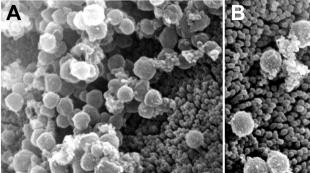Insufficiency of the second phase of the cycle: symptoms and treatment. What does luteal phase deficiency mean? Symptoms, causes and treatment. Luteal phase deficiency treatment
Hello, dear Larisa Sergeevna! Thank you for your congratulations and warm wishes on the birth of our second princess!
03/19/19 our fish princess was born! The operation was planned at 38 weeks, before that I was in the prenatal department for 2 weeks, everything went well. The husband was present at the birth, although not in the operating room, but in the room where the child was carried out. The girl was born simply wonderful, APGAR 8/9, eats well, calm. They called it Ayomide-Christina, Ayomide means “Happiness has come to me.”
I’m really overwhelmed with happiness, I still can’t believe that there are four of us now. It’s like a magical dream or a wonderful fairy tale, but you and the wonderful team of our dear MAMA Clinic made this fairy tale a reality!
My husband and I are still in slight shock that both of our protocols were successful. We can say, of course, that we were just lucky. But we understand that this luck is actually the result of your highest professionalism, faith in success, and struggle for us to the bitter end.
And here we are the parents of two wonderful healthy girls We look into the future with optimism! I hope to come visit our favorite clinic with both princesses soon :)
Thank you for this immense happiness! We wish good health, happiness, joy, successful protocols and fulfillment of all dreams and plans!
With great respect, Alexandra
In a year I will come to MAMA again!
Good day, Tatyana Sergeevna!
I was sure that I wrote to you after my birth with words of gratitude, and I know for sure that I typed this letter. But I live in the private sector, there is no landline Internet, and mobile is very unstable.
It's been a year and a little over two months since our son was born. Thanks to you and the possibilities of medicine, our joy appeared.
I recently subscribed to Instagram, to your clinic, looked at the photos, reviews and wanted to write to you.
We have a big boy, born 4100 grams. Blue-eyed blond. Very serious. He already loves watching cartoons, leafing through books (reading), assembling and disassembling pyramids and construction sets. We go to the pool and learn to swim.
We are waiting for him to start talking. Every day it becomes more and more interesting.
I think I’ll probably come to MAMA again in a year, or maybe earlier, who knows.
News from Novy Urengoy.
Thank you for your son, thank you for the happiness!
Dear wizards of the MAMA clinic!
Today we are one year old! And every day of this year I remembered all of you. Thank you for the joy and great happiness of feeling loved and loving parents!
Words cannot describe the feelings that overwhelm us from the moment we found out that everything worked out. And all this is thanks to you, your efforts! God bless you!!! You are best!!! You are our ray of hope!!! Low bow for your work!!! We will definitely come again for our daughter.
Larisa Sergeevna and Maria Alexandrovna, I thank the Lord God that fate brought us together. Today is your holiday, because your son Romashka was born, so happy and beautiful, thanks to you!
Everything worked out great for you and me!
Good afternoon, Yulia Mikhailovna!
Everything worked out great for you and me, on March 25 I gave birth to a boy, 3450 grams and 54 cm tall, healthy and handsome.
We would like to thank you very much for your professionalism and everyone who worked with us.
For your kindness, care, and much-needed advice for the couple, even by correspondence :)
Thank you!
We are happy and in a couple of years we will come for the girl!
Best regards, Olga.
Thank you so much for the joy of being a mother!
Hello!
I would like to express my gratitude to the doctors of the clinic: Kossovich Yu.M., Yakunna L.S., Eltsova E.I. for their professionalism, work, kindness, thanks to them and other doctors, whose names I don’t remember well, unfortunately.
Almost two years ago, on April 20, 2017, my daughter, my golden girl Zlata, was born.
I am truly grateful to you for your kind hearts
Hearing a child's cry at home, seeing children's eyes loving you, a naive, sincere smile...
This is what is the most unusually great happiness for a woman - to understand that you are a mother.
Having gone through a long and difficult 10-year journey of infertility treatment, undergoing many procedures and various schemes treatment, I began to give up, the thoughts began to occur more and more often that I would never experience the feeling of motherhood, it was scary...
From the threshold, starting from the security post, I was surprised by the sincerity, friendliness and decency of the employees who work there.
Of course! IVF! This is not a panacea, but in the hands of such specialists with extensive experience in this field, this is a VERY GREAT CHANCE.
I never thought that people medical workers, they can so sincerely and humanly understand you, support you, help you, and worry about you as if you were a loved one.
But we, the patients, are all very different, and you find an approach to everyone.
I am sincerely grateful to you for your kind hearts, caring warm hands, low bow to you for your high professionalism and my son Ilyusha.
Our fertility doctor is a wonderful person, Yakunina Larisa Sergeevna, transplantation in April 2018, birth on January 4, 2019, weight: 3420, height: 52 cm.
I will always remember you.
Luteal phase deficiency of the menstrual cycle (LPF) is one of the most common reproductive problems associated with ovarian dysfunction. It is faced not only by women who have suffered for a long time, but also by those who have repeatedly lost babies in the very early stages of pregnancy. The reason for this unfavorable development of events is a decrease in the production of the hormone progesterone (the “main” hormone of pregnancy) by the corpus luteum of the ovary, which leads to inferiority of the endometrium and disruption of the process of implantation of the fertilized egg.
Main causes of NLF
Luteal phase deficiency cycle is determined by a number of different factors, including:
- violations of the central mechanisms of regulation of reproductive functions, which have a damaging effect on different levels"hypothalamus-pituitary-ovarian" system
These include insufficient production of hormones by the ovaries, hyperprolactinemia and hyperandrogenism, pathological conditions thyroid gland and adrenal glands. In most cases, they are all formed as a result of trauma, neuroinfection, physical and mental stress, etc. and lead to an imbalance of steroid and gonadotropic hormones, and subsequently to incorrect and defective maturation of the egg, including when ovulation persists.
- changes in the receptor apparatus of the inner lining of the uterus - the endometrium
This group of factors can be caused by chronic infectious and inflammatory processes in the genital organs, adhesive processes after miscarriages and abortions, abnormal development of the uterus and appendages, delayed puberty, hypo- or hyperfunction of the thyroid gland. The reason or miscarriage with defective endometrium is the inability of a fertilized egg to properly attach to the wall of the uterus and receive necessary substances for further development.

This may include a lack of low-density lipoproteins in the blood, necessary for the biosynthesis of progesterone (observed with malnutrition, metabolic disorders, poor blood supply to the corpus luteum), as well as biochemical changes in the composition of the peritoneal fluid.
Symptoms and diagnostic methods of NLF
The main symptoms of insufficiency of the luteal phase of the cycle, as a rule, are:
- menstrual irregularities (shortening or lengthening the duration, painful menstruation)
- the appearance of scanty spotting before menstruation
- recurrent miscarriage
- long-term infertility
The presence of such reproductive disorders can be confirmed using various diagnostic methods, such as:
- measurement basal temperature(with NLF there is a small temperature difference between the phases, a shortening of the duration of the second phase of the cycle)
- Ultrasound assessing the dynamics of follicle growth, endometrial thickness and intensity of blood flow in the ovaries (often a discrepancy between the size of the corpus luteum and the thickness of the endometrium is determined by the day of the menstrual cycle, changes in the structure of the corpus luteum and a decrease in the intensity of blood flow around it)
- study of hormonal status (an abnormal nature of LH secretion, a decrease in the level of FSH in the first phase, estradiol - throughout the cycle, can be detected, low progesterone in the luteal phase, increased levels of prolactin or androgens)
- endometrial biopsy (allows you to determine the “delay” of the endometrial secretory response to changes hormonal levels)
As an additional study for NLF, hysterosalpingography is sometimes performed, which quite often reveals partial or complete obstruction fallopian tubes and a decrease in their tone.
Basic treatment methods for NLF
 The concept of luteal phase deficiency can hide not only hormonal, but also other disorders reproductive function(genetic, immune, etc.), which are the main cause of miscarriage and infertility. Therefore, the therapy should be comprehensive, aimed at eliminating the cause of NLF and general recovery body functions. Doctors prescribing monotherapy with drugs to restore progesterone levels in the second phase of the cycle are often unsuccessful, since treatment should often begin with the regulation of the follicular phase, which plays an important role in the maturation of the egg and the growth of the endometrium.
The concept of luteal phase deficiency can hide not only hormonal, but also other disorders reproductive function(genetic, immune, etc.), which are the main cause of miscarriage and infertility. Therefore, the therapy should be comprehensive, aimed at eliminating the cause of NLF and general recovery body functions. Doctors prescribing monotherapy with drugs to restore progesterone levels in the second phase of the cycle are often unsuccessful, since treatment should often begin with the regulation of the follicular phase, which plays an important role in the maturation of the egg and the growth of the endometrium.
Thus, along with progestins, to restore the ability to conceive in case of hyperprolactinemia or hyperandrogenism, it is required long-term treatment drugs that reduce prolactin and androgen levels. At hormonal deficiency 1st and 2nd phases of the cycle, it is possible to use replacement hormone therapy, to form a rebound effect - combined oral contraceptives, and in case of anovulation, it is recommended to take drugs to stimulate the ovaries. If endometrial receptivity is impaired, drugs that suppress local inflammatory reactions(naprossin, indomethacin), antibiotics (in the presence of infection), immunomodulators.
In addition, to improve the functioning of the ovaries and restore the endometrium, depending on the indications, methods of physiotherapeutic and sanatorium treatment, acupuncture, metabolic, enzyme and vitamin therapy (vitamin E, folic acid, B vitamins, ascorbic acid), taking adaptogens. It is also important to pay attention to normalization psycho-emotional state, so the doctor can recommend the patient to take sedatives and psychotherapeutic treatment.
Luteal phase deficiency symptoms
Causes of insufficiency of the luteal phase of the menstrual cycle:
1. Dysfunction of the hypothalamic-pituitary system, which arose after physical and mental stress, trauma, neuroinfection, etc. It has been established that with insufficiency of the luteal phase of the menstrual cycle, the level of FSH is lower than in healthy women.
2. Hyperandrogenism of ovarian, adrenal or mixed origin.
3. Functional hyperprolactinemia. Insufficiency of the luteal phase of the menstrual cycle can develop as a result of the influence of high concentrations of prolactin on the secretion and release of gonadotropic hormones, as well as inhibiting steroidogenesis in the ovaries. Often in women with luteal phase deficiency of the menstrual cycle, hyperprolactinemia is combined with hyperadrogenemia.
4. Protracted inflammatory process in the uterine appendages.
5. Pathology of the corpus luteum caused by biochemical changes in peritoneal fluid ( increased content prostaglandins and their metabolites, macrophages, peroxidase, etc.).
6. Hypo- or hyperthyroidism.
Diagnosis of luteal phase deficiency
When diagnosing NLF, they are based on clinical manifestations NLF and additional methods research. The main symptom of NLF may be infertility or scanty bloody issues 4-5 days before the start of menstruation. When diagnosing NLF, the following methods are used.
The traditional method is to measure basal temperature. At normal function of the corpus luteum, the duration of the luteal phase is 11-14 days, regardless of the duration of the menstrual cycle. NLF is characterized by a shortening of the second phase of the cycle, and the temperature difference in both phases of the cycle is less than 0.6 degrees. This test is not always objective for judging NLF, since when determining the level of progesterone in the blood plasma and endometrial biopsy, there may be a clear discrepancy between the level of progesterone and the severity of secretory changes in the endometrium.
Assessing the level of progesterone in the blood, determining the excretion of pregnanediol in the urine. The ideal is to determine its level during the second phase of the menstrual cycle 3-5 times. The level of progesterone in the blood plasma 9-80 nmol/l and pregnanediol in the urine more than 3 mg/day is an indicator of satisfactory function of the corpus luteum.
An endometrial biopsy performed 2-3 days before the onset of menstruation reveals insufficient secretory transformation of the endometrium. It is found in half of women with infertility and typical biphasic rectal temperature and in approximately 70% of women with an atypical biphasic basal temperature curve. A normal blood progesterone level in the second phase of the cycle does not guarantee a full secretion phase, since there may be a reception disorder at the endometrial level, therefore, in case of infertility, an endometrial biopsy is indicated.
Ultrasound scanning of follicle growth and endometrial thickness in the dynamics of the menstrual cycle suggests NLF.
Laparoscopy performed after ovulation allows one to observe stigma at the site of the ovulated follicle, although the presence of ovulation does not mean full function corpus luteum.
Luteal phase deficiency treatment
Treatment of NLF - insufficiency of the luteal phase of the menstrual cycle can be started according to the type replacement therapy, namely, prescribe a progesterone solution in the second phase of the cycle 10 days before the start of menstruation. Pregnancy was observed in more than 50% of women.
It has been established that norsteroids (norkolut, prelamut, etc.) have a luteolytic effect. Chorial gonadotropin is preferably administered on the 2-4-6th day of increase in basal temperature. Earlier and later administration is not advisable: early administration may promote luteinization of a non-ovulating follicle, and later may have a luteolytic effect. The administration of hCG can be combined with the administration of clomiphene or pergonal, but under the control of blood estradiol levels or ultrasound scanning.
Combined estrogen-gestagen drugs are prescribed for the purpose of a reboud effect over 2-3 courses.
Clomiphene according to the usual regimen: from the 5th to the 9th day of the cycle, 50 mg; if the effect is insufficient, the dose can be increased TO 100-150 mg/day. Clomiphene from the 5th to the 9th day of the cycle, hCG at 2000-3000 ME 184 2-4-6th day of increase in basal temperature. Pergonal in combination with hCG.
For NLF caused by latent hyperprolactinemia and hyperandrogenism, treatment with dexamethasone is recommended - 0.75 mg/day. for 10 days, then 0.5 mg/day, and parlodel 2.5 mg/day.
There are reports of beneficial influence therapy of NLF with luliberin. There are reports of treatment of NLF with prostaglandin blockers (indomethacin, naprossin).
In conclusion, it should be noted that NLF is a multifactorial pathological condition leading to infertility. Therefore, its treatment is quite difficult; the effectiveness of treatment increases when the cause of NLF is determined and pathogenetic therapy is carried out.
Prevention consists of preventing those pathological conditions that contribute to the development of NDF.
Fanchenko N.D., Ivanets T.Yu.
FSBI "NTsAGiP im. V.I.Kulakova" Ministry of Health and Social Development of Russia, Moscow
The problems of studying and correcting reproductive disorders are currently acquiring not only medical, socio-demographic, but also economic significance. Among married couples of childbearing age, infertility in many countries, including Russia, reaches 15%. The female factor of infertility accounts for more than 50% of the structure of infertility in married couples. Infertility is a symptom of the most various violations somatic and mental health and occurs against the background systemic diseases(endocrine, infectious, autoimmune, psychosomatic). Disruption of generative function can be caused by sudden changes in body weight, damage to gonadal tissue as a result of treatment of cancer (radiotherapy, chemotherapy), chronic stress, intense sports, etc. (1,5,20).
Accordingly, clinicians involved in rehabilitation reproductive health using modern auxiliary medical technologies(ART), a diagnostic problem arose specific reasons infertility (1.4). This required the development of an algorithm for examining married couples and laboratory monitoring of the therapy process (10,13). This article focuses on modern methods laboratory examination of women in need of restoration of generative function.
Hormonal regulation of the menstrual cycle
The normal menstrual cycle is ensured by the functioning of three main components: the arcuate nuclei of the hypothalamus, pituitary gonadotrophs and ovarian follicles (14,16,18). The arcuate nuclei secrete GnRH into the portal system approximately once per hour. Gonadotropin-releasing hormone, interacting with specific receptors located on the surface of gonadotrophs, stimulates the synthesis, accumulation and release of luteinizing (LH) and follicle-stimulating (FSH) hormones. The release of LH and FSH from the pituitary gland occurs in a pulsed manner with a frequency of approximately 1 pulse per hour (15,16). Gonadotropins in the ovaries regulate the growth of follicles and the synthesis of sex hormones. Ovarian sex hormones, in turn, influence the hormone-secreting system of the pituitary gland, and thereby synchronize hormonal profiles throughout the menstrual cycle (7). At the beginning of the follicular phase of the cycle, ovarian follicles that have begun to grow under the influence of FSH increase in volume, which is accompanied by an increase in the concentration of secreted estradiol (E2) (17). In addition, growing follicles begin to synthesize inhibin. This process lasts on average 12 - 14 days. In turn, estradiol and inhibin directly affect pituitary gonadotrophs and inhibit the production of LH and FSH (negative feedback). If the concentration of estradiol in the blood is maintained above a certain threshold value - 700 pmol/l for approximately 36 - 48 hours, then its inhibitory effect on pituitary gonadotrophs ceases and estradiol begins to stimulate the occurrence of an ovulatory peak of gonadotropins. This so-called positive feedback effect is directed at the gonadotrophs of the pituitary gland. In response to an increase in the concentration of gonadotropins, the maturation of the dominant follicle is completed, ovulation occurs and the formation of the corpus luteum begins. During the luteal phase of the menstrual cycle, the concentration of gonadotropins circulating in the blood is approximately the same as during the follicular phase. Progesterone produced by the cells of the corpus luteum, as well as inhibin, act on the hypothalamus and pituitary gonadotrophs, thereby indirectly inhibiting the development of follicles (19). The corpus luteum, which forms at the site of a ruptured follicle, plays the role of an independent endocrine gland, the main function of which is to produce progesterone, estrogens and inhibin. Maximum activity of the corpus luteum is observed in the middle of the luteal phase. At the end of the infertile cycle, the corpus luteum regresses. It has been established that, in addition to LH and FSH, the functional activity of the gonads can be influenced by prolactin, hormones of the adrenal cortex and the thyroid gland.
To ensure normal functional activity of the ovaries, a strictly defined level of prolactin is required. High concentrations of this hormone can have an inhibitory effect on the processes of folliculogenesis and reduce the secretory activity of the corpus luteum.
In many cases, disorders of the hypothalamic-pituitary-gonadal system are caused by pathology of the adrenal cortex. Functional hyperandrogenism is often observed, in which the secretion of dehydroepiandrosterone (DHEA), dehydroepiandrosterone sulfate (DHEA-S) and testosterone increases, while there is no change in the activity of steroidogenic enzymes (9,12). In contrast to functional hyperandrogenism, congenital hyperplasia of the adrenal cortex (adrenogenital syndrome, AHS) occurs due to congenital genetically determined defects in the enzyme systems that provide the synthesis of cortisol (F).
If these defects are present, even in heterozygous carriers of the corresponding mutations, increased levels of androgens in the blood are accompanied by increased levels of 17-hydroxyprogesterone (17-OP). Diagnosis of AGS is based on measuring the concentration of 17-OP in the blood after the administration of corticotropin (ACTH test) (20). Thyroid dysfunction (hypo- and hyperthyroidism) are also factors that impede reproductive function in both men and women Based on the above patterns, to establish the causes of ovarian dysfunction, it is necessary to obtain data on the concentration of hormones such as LH, FSH, thyroid-stimulating hormone (TSH), prolactin, estradiol, testosterone, adrenal hormones (cortisol, DHEA-S, 17-OP) and thyroid hormones (triiodothyronine - T3, thyroxine - T4 and their free forms).
Anovulation and luteal phase deficiency
For differential diagnosis For ovulatory and non-ovulatory menstrual cycles, it is sufficient to determine the concentration of progesterone in the middle of the luteal phase of the cycle. During the anovulatory cycle, cyclic bleeding (menstruation) persists, but ovulation and the formation of the corpus luteum do not occur, and therefore the concentration of progesterone is significantly lower than the norm. Luteal phase insufficiency (LPF) - a violation of the functional activity of the corpus luteum - is observed in half of all patients with ovarian dysfunction and is characterized by a lower concentration of progesterone on days 21–23 of the menstrual cycle compared to that in the presence of an actively functioning corpus luteum.
However, given the fact that in healthy fertile women of reproductive age, not all cycles can be ovulatory, if a low concentration of progesterone is detected, the determination of the level of this hormone must be repeated on days 21 - 23 of three consecutive menstrual cycles. The absence of a marked increase in progesterone concentration in the mid-luteal phase of three consecutive menstrual cycles indicates NLF or anovulation depending on the level of progesterone (5,6,11).
To establish the causes of NFL or lack of ovulation, it is necessary to determine the concentration of TSH, PRL, LH, FSH, E2, T, F, DHEA-S and thyroid hormones (T3, T4) in the early (2-3 days) follicular phase of the menstrual cycle.
Identified and adequately corrected dysfunction of the thyroid gland, as a rule, leads to restoration of ovarian function and, thereby, the ability to reproduce.
In case of hyperprolactinemia, the patient is referred for appropriate examination to exclude or confirm the presence of a pituitary tumor. With adequate therapy and normalization of prolactin levels, the ability to reproduce is usually restored. At normal level prolactin, attention should be paid to the concentration of protein (LH, FSH) and steroid (E2, T, F, DHEA-S) hormones.
High level gonadotropins with low estradiol levels indicates primary damage to the gonads - a situation unfavorable for therapy. On the contrary, low levels of gonadotropins indicate central genesis disease and suggests the effectiveness of hormone replacement therapy.
Amenorrhea
The first diagnostic test for amenorrhea to exclude pregnancy or tumors is to determine the concentration human chorionic gonadotropin(hCG).
To identify disorders in the hypothalamic/pituitary system, it is necessary to determine the concentration of prolactin, to exclude hyperandrogenism - testosterone and DHEA-S, and to exclude pathology of the thyroid system - the concentration of TSH and thyroid hormones. If the results of these determinations do not differ from the normative indicators, it is advisable to conduct a test with progesterone.
In primary amenorrhea, the most important laboratory test is the determination of FSH, because Primary disorders of gonadal function are accompanied by high levels of FSH in the blood. It is advisable to simultaneously determine the LH concentration, since an elevated LH level will confirm the diagnosis, especially if the LH/FSH concentration ratio<1. Соответственно, при первичной аменорее в крови должно быть низкое содержание эстрадиола.
In case of secondary amenorrhea after excluding pregnancy, the same studies must be carried out. In case of oligomenorrhea, the examination is carried out either according to the algorithm for examining the regular menstrual cycle, or according to the algorithm for examining amenorrhea (depending on the date of the last menstruation).
Algorithm for examining infertile couples
It should be especially noted that laboratory diagnostic examination of patients (married couples) who require the use of assisted reproductive technologies (ovulation stimulation, artificial insemination, in vitro fertilization) to restore fertility cannot be limited to just examining the condition reproductive system. It is known that infertility is not a disease, but a condition that is a symptom of many somatic diseases and disorders of regulatory processes at the level of the hypothalamus.
An expanded algorithm for the initial examination of infertile patients includes determining the state of the reproductive system (gonadotropins, estradiol, testosterone), thyroid system, adrenal system (cortisol, DHEA-S), somatotropic and prolactin-secreting functions of the pituitary gland (10). In addition, it is necessary to study the infectious status of the body (the presence in the blood of specific antibodies to sexually transmitted infections) (see Table 1) (20).
Table 1 Primary examination of patients with reproductive dysfunction
1. Anamnesis collection, bimanual and ultrasound examination;
Endocrine examination in the early follicular phase: LH, FSH, PRL, STH, E2, T, F, TSH, T3, T4;
If the level of basal E2 is elevated, determine CA-125, repeat ultrasound of the reproductive system
Endocrine examination in the middle of the luteal phase: P, T, F;
Infectious testing:
1) General clinical examination of discharge from the genitourinary organs (smear);
2) Bacteriological analysis of discharge from the genitourinary organs;
3) Determination of antibodies to HSV, CMV, toxoplasma, rubella virus, chlamydia.
If deviations are detected, additional examination and/or prescription of appropriate treatment. Control studies after treatment.
The inclusion of the CA-125 marker (a marker of ovarian cancer) in the examination algorithm for women who need ovulation stimulation is due to the fact that ovulation stimulation is accompanied by activation of estradiol production and, in connection with this, proliferative processes. Antigen CA-125 is a marker reflecting the severity of proliferation processes (2.8).
When the concentration of CA-125 > 20 IU/ml, measured before the start of stimulation, the likelihood of developing ovarian hyperstimulation syndrome is quite high.
Problems encountered when interpreting results laboratory research
Most often, these problems are associated with errors at the preanalytical stage of the examination. The secretion of many hormones (prolactin, ACTH, TSH, cortisol) has a daily (circadian) rhythm, so blood must be taken in certain time(usually at 8 - 9 am). If the laboratory receives blood taken at an arbitrary time, the diagnostic significance of the test results is sharply reduced. In young men, the secretion of gonadotropins also has a circadian rhythm. In addition to the circadian rhythm, there is also an hourly (circhoral) rhythm in the secretion of many hormones. With a single blood sample, it is possible to measure both the maximum and minimum hormone content in a given sample. Often, when diagnosing hypo- and hypergonadotropic conditions, the content of gonadotropins in the blood corresponds to the lower or upper values of the “norm”, which causes confusion among clinicians and mistrust in the work of the laboratory and the quality of test systems (3). In these cases, in order to avoid diagnostic errors, repeated determinations of the concentration of LH and FSH or determination of the hormone content in a mixed sample obtained from 2 blood samples with an interval of 30 minutes are necessary.
In addition, obtaining incorrect results may be caused by violation of the rules for storing biomaterial and its transportation to the laboratory.
When interpreting a laboratory examination, it is necessary to take into account the patient's possible pharmacotherapy, since many drugs directly or indirectly affect endocrine system. Thus, neuroleptics and tricyclic antidepressants reduce FSH levels and increase the concentration of prolactin in the serum. Low level testosterone may be associated with therapy with estrogens, glucocorticoids, and hypothyroidism. Bromocriptine and cancer cause testosterone overproduction prostate gland. High estradiol levels may be due to hyperthyroidism. Hyperprolactinemia is often found with stress, hypothyroidism and chronic diseases kidney
Certain difficulties arise when interpreting the results. Laboratory monitoring of a patient should preferably be carried out in the same laboratory in order to avoid incorrect comparison of results obtained on different equipment, different methods using various reagents. Breakpoints should be interpreted with caution because any laboratory method is subject to variability. In some cases, even healthy people indicators that go beyond the reference values are identified.
Tense demographic situation typical for the majority developed countries and largely due to the increase in the number of infertile marriages, stimulated the intensive development of research in the field of human reproductive health. Knowledge of the patterns of functioning of the reproductive system made it possible not only to understand the mechanisms of disorders of the generative process, but also to develop adequate laboratory methods their diagnostics and monitoring. Moreover, in many cases the setting correct diagnosis impossible without appropriate laboratory tests. Modern technologies provide clinicians with a range of diagnostic methods that allow them to reliably and quickly solve the problem of choosing effective therapy. Difficulties that arise when interpreting research results are most often associated with the preanalytical stage of analysis and with a simplified interpretation of reference (normative) limits.
Currently, laboratory services throughout almost the entire country have the capabilities for timely and reliable detection of disorders of generative function and monitoring of therapy.
What is endocrine infertility?
Endocrine infertility is the snow that falls in July, it is the sun rising in the west, it is the seeds that were sown unripe. That is, nonsense, absurdity, and a complete lack of common sense.
The body can be compared to a mechanism that works according to a clear pattern. All processes in it are subject to certain laws and rhythms. Each process is debugged, one follows another, and if a failure occurs at some level, the entire system suffers.
The menstrual cycle is no exception. Remember the generally accepted name “menstruation”, this means that the process is regularly repeated from month to month, at the same time, or at approximately the same intervals. From the name it is easy to understand that a certain biological cycle is at work here. Some women say: “my periods are like clockwork.” It is clear that we're talking about about healthy women.
So, we never think about our organs when they are working smoothly, we just don’t feel it. The body gives us the opportunity to go about our daily routine without requiring attention. Why? Everything is very simple (although, if you think about how complicated everything is, it’s not simple at all, but we don’t need to go into that, since the body itself knows what to do). So, simply in all organs and systems, in their functioning, the regulation of processes plays the main role. It is multi-level, directed from the center (brain structures: pituitary gland, hypothalamus) to the periphery (organs: uterus, ovaries). It consists of many links, and hormones and other bioactive substances serve as conductors. The hierarchy in this system is very complex, and subordination is strictly observed. Everyone knows their job and unconditionally obeys the rules established once and for all.
And as soon as something malfunctions somewhere, that is, signals coming from the center of regulation are distorted or their transmission and perception at any level is disrupted, the system begins to work on the principle of a “damaged telephone.” The center signals, impulses are distorted, the periphery cannot recognize incoming commands, and tries to cope, focusing on false signals or at its own discretion, in turn sends repeated requests or distress signals, the center does not understand what is happening or does not receive them at all, amplifies or cancels his orders, they again do not reach or change their meaning, the periphery falls into a panic or, on the contrary, believes that he is doing everything right, everything repeats itself, becomes completely confused, chaos ensues. But any system strives for balance, so gradually this chaos becomes a new order with confused or lost signals, with an actively functioning (or inactive) center and an adapted periphery.
This is approximately what happens with endocrine infertility, and the result of the new order-chaos is a disruption of the reproductive system, that is, a disruption in the formation of a full-fledged egg and ovulation.
So, endocrine infertility is infertility characterized by a violation of the ovulation process. The frequency of this form of infertility varies, according to various sources, from 4 to 40%.
Ovulation does not occur at all - anovulation
Anovulation- one of the most common reasons infertility (no egg, no one to fertilize, no pregnancy - infertility occurs).
Chronic anovulation - a pathological condition that occurs due to disturbances in cyclic processes in the hypothalamic-pituitary-ovarian system.
The main sign of endocrine infertility is chronic anovulation against the background of certain hormonal abnormalities, which can be both the cause of impaired folliculogenesis (hypoprolactinemia, hyperandrogenism, multidirectional changes in the level of gonadotropins) and its consequence (disruption of the rhythm of cyclic production of estrogen and progesterone). The result of this is a variety of clinical, biochemical, morphological disorders. Which in turn manifests itself wide range diseases: dysfunctional uterine bleeding, oligomenorrhea, amenorrhea. With chronic anovulation, infertility is often mixed, since a violation of ovulatory function is accompanied by the frequent addition of tubal, intrauterine and cervical factors. This is due to negative influence imbalance of female sex hormones on the tone of the fallopian tubes, the condition of the endometrium and the properties of cervical mucus.
The size of the ovaries can vary widely - from normal to several times enlarged. Regular menstrual cycle is observed in 33.2%, irregular - in 23.6%, amenorrhea - in 43.2% of them.
Insufficiency of the luteal phase of the menstrual cycle (LPF).
This is a dysfunction of the ovaries, characterized by reduced function of the corpus luteum of the ovary. Ovulation occurs, the corpus luteum is formed, producing the hormone of the second phase of the cycle - progesterone, which prepares the woman’s body for possible pregnancy. Without a certain level of this hormone, pregnancy simply will not occur, even if fertilization occurs (which, by the way, is also unlikely with a lack of progesterone).
So, the corpus luteum has reduced function, it works weakly. Accordingly: insufficient synthesis of progesterone occurs, which leads to insufficient secretory transformation of the endometrium, changes in the function of the fallopian tubes, disruption of implantation of the fertilized egg, which is clinically manifested by infertility or spontaneous miscarriage in the first trimester of pregnancy.
The frequency of NLF among the causes of infertility is 3-12.5-25.2%.
Causes of NLF:
- Dysfunction of the hypothalamic-pituitary system that occurs after physical and mental stress, trauma, neuroinfection, etc.
- Increased levels of androgens of ovarian, adrenal or mixed origin.
- Functional hyperprolactinemia. NLF can develop as a result of the influence of high concentrations of prolactin on the secretion and release of gonadotropic hormones (hormones responsible for transmitting impulses from the pituitary gland and hypothalamus), as well as inhibiting the formation of hormones in the ovaries. Often in women with NLF, hyperprolactinemia is combined with hyperandrogenemia.
- Protracted inflammatory process in the uterine appendages.
- Pathology of the corpus luteum caused by biochemical changes.
- Diseases of the thyroid gland (hypo- or hyperthyroidism).
The main symptom of NLF may be infertility or scanty bleeding 4-5 days before the onset of menstruation. When making a diagnosis, the following are used: ovulation test, assessment of the level of progesterone in the blood and its metabolites in the urine, endometrial biopsy, ultrasound scanning of follicle growth and endometrial thickness in the dynamics of the menstrual cycle, laparoscopy performed after ovulation is also used, although the presence of ovulation does not mean full function of the corpus luteum.
Treatment is usually started as replacement therapy. This means that if the ovaries do not produce sufficient quantity progesterone, it is added in the form of progesterone-containing drugs. In addition, drugs are used that create artificial cycle, preparing the patient for pregnancy, and after that ovulation stimulants are prescribed.
NLF is a pathological condition leading to infertility. Therefore, its treatment is quite difficult; the effectiveness of treatment increases by identifying the cause of NLF and carrying out therapy aimed at eliminating these causes. Prevention consists of preventing those pathological conditions that contribute to the development of NDF.
Luteinization syndrome of unovulated follicle (LNF syndrome).
What does it mean. The follicle matures in the ovary; this process must culminate in the maturation of the oocyte, rupture of the follicle and release of the egg. However, the follicle does not rupture and the almost mature egg remains in the ovary, that is, ovulation does not occur. Accordingly, pregnancy does not occur.
The frequency of LNF syndrome in unexplained infertility ranges from 12-17 to 31%.
The cause has not been established. There is a point of view that this syndrome may be a random phenomenon and does not occur in every cycle and that stress, hyperandrogenism and hyperprolactinemia may play a role in its occurrence.
The most informative for diagnosis are ultrasound echography during the menstrual cycle and laparoscopy, performed in the second phase of the cycle.
There is no special treatment for LNF syndrome, since the causes of this pathology have not yet been clearly established. Hormone replacement therapy and ovulation stimulation are also used, which allows women with these disorders to become pregnant. It is clear that if pregnancy occurs, hormonal regimens are not canceled, since the causes of the disease have not disappeared, and the role of the reproductive system has been taken over by the prescribed hormones.
Women with endocrine forms of infertility represent a risk group for unfavorable course and outcome of pregnancy and childbirth. The frequency of pregnancy with endocrine infertility and its outcome depend on many factors: the woman’s age, the duration of infertility, the depth of the lesion endocrine function, reproductive system, condition of other organs and systems of the body, social status of a woman, etc.
Previously it was believed that infertility treatment should be carried out somatically healthy women only up to 35 years of age. Currently, due to advances in antenatal diagnostics, stimulation of ovulation is possible in late reproductive age. However, the risk to mother and baby is high. When pregnancy occurs after stimulation of ovulation, women need a thorough examination (clinical, ultrasound, hormonal) and monitoring from the very beginning. early dates it, if necessary, in a hospital setting. During full-term pregnancy, the issue of labor management tactics is also decided individually, taking into account the woman’s age, the outcome of previous pregnancies, the duration of infertility and treatment.
You are young, full of energy and happily married. My husband carries me in my arms, my relationship with my mother-in-law is almost perfect, my colleagues at work respect me, and my bosses set me up as an example and regularly raise my salary. It would seem that life has worked out and you just need to be glad that luck has chosen you as an object of adoration. But one moment haunts me: one line on test strip, which determines the onset of pregnancy, or rather, its absence. It seems that your husband is healthy, and you don’t complain about anything, but there are no children. For a long time. Some years. Unsuccessful attempts that lead nowhere. And when you finally understand that you need to go to the doctor, he will most likely diagnose “estrogen-progesterone insufficiency,” which is sometimes also called “luteal phase insufficiency” (LPF).
We immediately want to calm down the alarmists. Firstly, you are of no interest to science, since NLF occurs in 3-4% of women with a confirmed diagnosis of infertility and is the cause of 5-7% of miscarriages. Secondly, this is a diagnosis, and not a sentence at all. Thirdly, if you start treatment on time, you will definitely find yourself on the other side of the statistics and will be able to appreciate all the delights chronic lack of sleep, when the baby will have to be rocked all night. Therefore, you should not engage in self-flagellation and wipe away your tears at the sight of happy mothers walking with their children. The best thing you can do is go to the doctor. Not tomorrow, not in a month, not after the completion of an important project, but when you realize that there is a problem. Therefore, it is worth understanding NLF more carefully.
Symptoms of NLF
They are very diverse, but, unfortunately, they can be manifestations of a dozen other diseases. Because correct diagnosis estrogen-progesterone deficiency is a rather complex task. NextConsequently, the presence of only one or two symptoms cannot be an unambiguous sign ofluteal phase deficiency. In general, there are four main manifestations of NLF.
Pledge successful treatment– qualified diagnosis of NLF. Therefore, if you really want children, you should not self-medicate. This is especially true for older women and those with medical card there are certain diseases (especially those that last for years).
- Chronic infertility due to constant failure to conceive. It is important to understand that it can be caused not only by estrogen-progesterone deficiency, but also various diseases, changes in hormonal levels, allergic reaction on the husband’s sperm or its low quality, as well as many other reasons, which only one can understand qualified specialists(gynecologist, therapist, andrologist, mammologist and endocrinologist).
- Chronic diseases of the gastrointestinal tract, accompanied by bloating. The relationship between these symptoms and NLF is quite difficult to explain in normal everyday language, but it still exists. Unfortunately, many gynecologists show amazing shortsightedness in this matter, so it makes sense to inform your doctor about all health problems, even if they, at first glance, have no connection with infertility.
- Diseases of the mammary glands. Reasonable concern for a woman should be caused by lumps, permanent nagging pain, itching and change normal color breast skin. It is possible (although unlikely) that such symptoms indicate luteal phase deficiency.
Decrease in body temperature normal conditions– a sign of luteal phase deficiency
Reduced body temperature. Naturally, if you returned home a few minutes ago, and it’s “frost and sunshine, a wonderful day,” then there is no reason to worry. If the thermometer consistently shows 35.5, you should think about visiting a doctor.
Risk factors for NDF
The probable and most common causes of the disease include:

Doctors consider the least likely following reasons: uterine bleeding, vitamin deficiency, treatment of certain diseases without appropriate control.
Attention! It is important to remember that the cause of a miscarriage (and the resulting NLF) can be problems with the previous pregnancy: a failure in the intrauterine development of the fetus or if it lasted longer than the term (41-42 weeks).
Treatment of NLF
It is important to note that therapy for NLF must be comprehensive, since only in this case is it usually possible to achieve complete cure and successful pregnancy.
In our clinics and medical centers There are two common approaches to the treatment of luteal phase deficiency. The first consists of symptom relief, endless collection of tests, weekly visits to the doctor and intimate conversations with the young lady at the reception desk who accepts your money (the clinic is a commercial one). Of course, one cannot count on success in this case, and such a technique can only be recommended to those ladies who are accustomed to being the center of attention and are lukewarm about pregnancy.
Attention! Competent and effective therapy Estrogen-progesterone deficiency is a rather complex process and not at all as fast as we would like. Therefore, we repeat, you should not delay your visit to the doctor.
The correct approach involves a whole range of measures and is aimed at combating causes of NLF, and not with its external manifestations.
So, what can a doctor offer a patient?
There is no need to be afraid of pain or injury during an acupuncture session with a professional doctor.
- Acupuncture sessions. It is believed that the therapeutic effect is achieved by inhibiting lipid peroxidation, stimulating receptors in the pelvic organs, activating antioxidant protection and enhancing steroidogenesis in the ovaries. Traditional medicine treats this method rather coolly, although he admits that it often turns out to be very useful, but not as the main method of therapy.
- Physiotherapy. First of all, this is intravaginal phonophoresis of vitamin E, treatment with weak electromagnetic fields (0.1 mW/cm, frequency 57 hertz, exposure 30 minutes) and electrophoresis with copper or zinc. At the same time, it is often possible to achieve an increase in progesterone levels, normalization of plasma activity and the manifestation of secretory transformation of the endometrium.
- Drug stimulation of ovulation (course of treatment with microfollin and utrogestan) in combination with vitamin therapy (B6, B12, T, folic and ascorbic acid).
Attention! The procedure is quite dangerous, therefore it must be carried out strictly (!) under the supervision of a doctor and with daily ultrasound!
- Sanatorium-resort treatment, especially if there is inflammatory processes in the pelvic organs.
- Significant reduction physical activity. Remember Nekrasov’s: “He will stop a galloping horse and enter a burning hut”? So, during therapy you should become gentle and weak, leaving the feats to the stronger sex!
- Normalization of the diet while avoiding any bad habits(smoking, alcohol).
- Hormonal therapy (progesterone injections 10 days before the start of menstruation and always under the supervision of a doctor).
- The use of human chorionic gonadotropin (the so-called “placenta hormone”) and follitropins (drugs that stimulate the formation and development of the follicle). Release form: powder for injection (500 and 1000 units in one bottle). The dosage and duration are calculated individually by the attending physician.
P preparations based on human chorionic gonadotropin

 Human chorionic gonadotropin
Human chorionic gonadotropin









